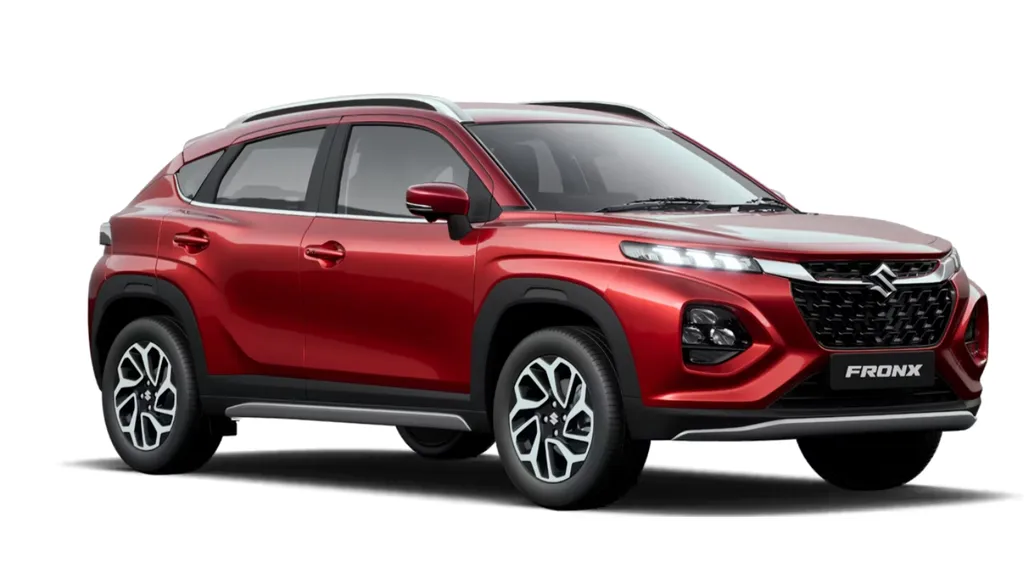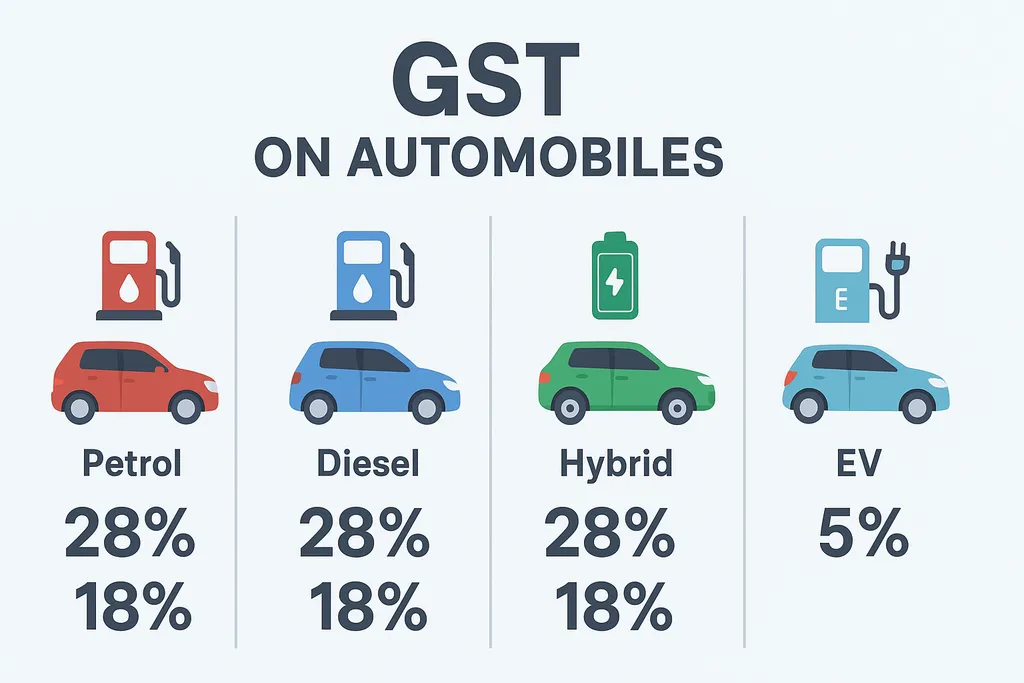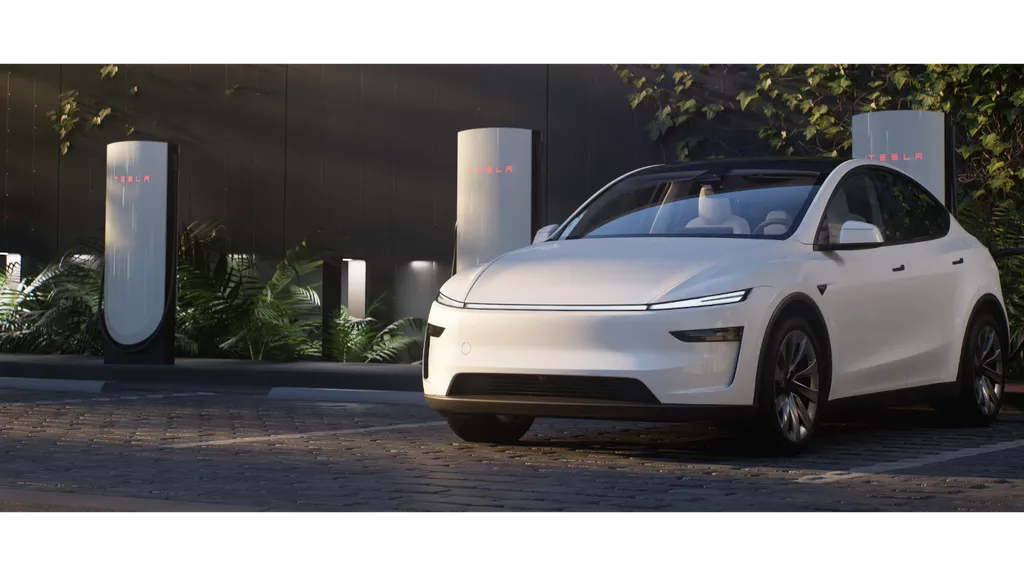For Indian buyers, every tax change directly impacts the dream of owning a car or bike. The recent GST rate changes have brought good news — automobiles are now becoming cheaper across categories, from commuter bikes to mid-size SUVs. But why exactly is this happening, and what does it mean for consumers and the industry? Let’s dive in.
GST and Automobiles: A Quick Recap
Before GST was introduced in 2017, buyers had to pay multiple taxes:
- Excise duty
- VAT (varied state to state)
- Road tax, octroi, entry tax, etc.
This often pushed the effective tax rate above 40% on cars. GST simplified the system with uniform slabs. Now, with the latest revisions, several segments are taxed lower, leading to direct savings for customers.
Key GST Rate Changes
- Two-Wheelers (under 350cc): Slashed from 28% to 18%, making commuter bikes more affordable.
- Small Cars (under 4m length, <1200cc petrol / <1500cc diesel): Effective tax reduced by 2–4%.
- SUVs & Larger Cars: Still taxed at 28% + cess, but reclassification has helped some models avoid the “luxury” tag.
- Electric Vehicles (EVs): At just 5% GST, plus subsidies, EVs remain the biggest winners.
GST Rate Changes on Automobiles
- Petrol, LPG, or CNG motor vehicles up to 1200 cc and length up to 4000 mm: Earlier taxed at 28% + 1% cess, now reduced to 18%.
- Diesel motor vehicles up to 1500 cc and length up to 4000 mm: Earlier taxed at 28% + 3% cess, now reduced to 18%.
- Motor cars and other passenger motor vehicles (outside the above categories): Still taxed at around 40% (28% + 15–22% cess).
- Hybrid vehicles (spark-ignition + electric motor) up to 1200 cc and length up to 4000 mm: Earlier 28% + 1% cess, now 18%.
- Hybrid vehicles (spark-ignition + electric motor) over 1200 cc engine or length over 4000 mm: Still taxed at 40%.
- Hybrid vehicles (compression-ignition + electric motor) up to 1500 cc and length up to 4000 mm: Earlier 28% + 3% cess, now 18%.
- Hybrid vehicles (compression-ignition + electric motor) over 1500 cc engine or length over 4000 mm: Still taxed at 40%.
- All categories of electric motor vehicles (EVs): Remain at a very low 5% GST.
Price Comparison: Before vs After GST
The impact of the GST rate cut can be seen directly in vehicle prices. For example, the Honda Activa 125 used to cost around ₹86,000, but after the GST change, its price has dropped to about ₹79,000, saving buyers nearly ₹7,000.
In the small car segment, the Maruti Swift VXi was priced at around ₹7.20 lakh, but now comes in at about ₹6.95 lakh, giving a benefit of nearly ₹25,000.
Compact SUVs have also seen reductions — the Hyundai Creta E, which earlier carried a price tag of about ₹11.20 lakh, now costs closer to ₹10.90 lakh, saving customers around ₹30,000.
Why Are Automobiles Becoming Cheaper?
- Uniform Taxation: No more state-wise variation in VAT or entry taxes.
- Direct GST Cuts: Especially in the two-wheeler and hatchback categories.
- Reclassification of SUVs/MPVs: Some models moved out of the “luxury” bracket.
- Boost to EVs: 5% GST + incentives make them far cheaper than before.
Impact on Consumers
- Lower On-Road Prices: Reduced ex-showroom cost means lower road tax, insurance, and EMIs.
- Easier Financing: Banks now see stronger demand for affordable models.
- Wider Choices: Buyers can now consider higher trims or bigger models within the same budget.
Impact on Automakers
- Higher Sales Volumes: Especially in the price-sensitive two-wheeler segment.
- EV Push: With GST at 5%, companies like Tata, BYD, and MG are aggressively expanding their EV lineup.
- Competitive Pricing: Brands like Maruti, Hyundai, and Kia are launching better-equipped base variants to attract buyers.
Final Take
The GST rate changes are a game-changer for India’s auto industry. By reducing costs for buyers, the government has boosted demand while pushing manufacturers towards EVs and hybrids. For consumers, this means one thing — more car for your money.































